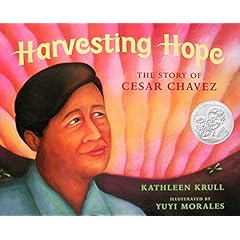
Available for purchase at Amazon
Summary: This story is about a multicultural neighborhood on a rainy Saturday afternoon. One girl sets of to find a three-handled rolling pin to help her mother bake bread and soon discovers everybody in the neighborhood is baking bread too. Although she never finds the rolling pin, she finds a cultural experience through a variety of breads.
My Opinion: This book is great because it uses a universal food to show differences and similarities in cultures. It brings diversity to children’s attention. It is also a great way to study geography and local ingredients that are native to a certain place.
Possible Topics: Multiculturalism and diversity are the main themes throughout this book. It is a great way of comparing cultures. It is also a great introduction to geography and countries around the world.
Children can study and learn the diverse cultures within their communities. They can compare and contrast the customs and beliefs within these different sultures. They can also be encouraged to view the stereotypes assosiated with certain groups of people and think of ways to combat these stereoptypes within their own classroom and neighborhood.


 In 1957 a Judge ordered four African American girls to attend white schools. Ruby Bridges, a six-year-old black girl, was one of those girls. The first day she went to her new school, her mother walked to school with her. United States marshals walked up the steps with them. There was a crowd in front of the school chanting. They were holding up signs saying racist comments and trying to scare Ruby. Ruby had to be taught alone without other students, because the white parents did not want their children to be in the same class as a black child. Every day Ruby prayed for the people on the way to the school, asking God to forgive the mob. One day she forgot to pray for the people so she went back down the school steps and started to pray for them.
In 1957 a Judge ordered four African American girls to attend white schools. Ruby Bridges, a six-year-old black girl, was one of those girls. The first day she went to her new school, her mother walked to school with her. United States marshals walked up the steps with them. There was a crowd in front of the school chanting. They were holding up signs saying racist comments and trying to scare Ruby. Ruby had to be taught alone without other students, because the white parents did not want their children to be in the same class as a black child. Every day Ruby prayed for the people on the way to the school, asking God to forgive the mob. One day she forgot to pray for the people so she went back down the school steps and started to pray for them.



















